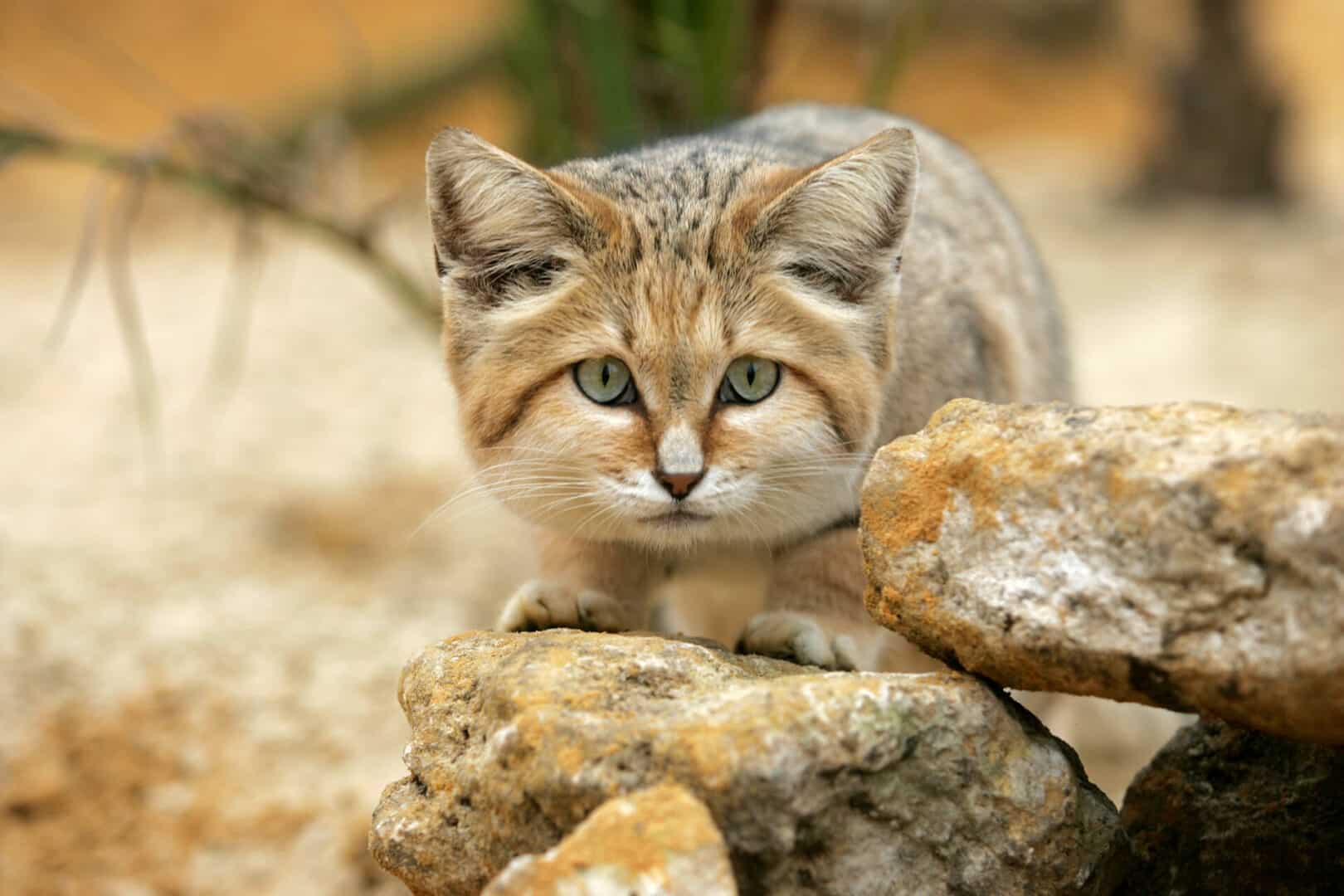Lurking in the deserts is a fierce yet adorable feline known as the sand cat. These cats aren’t ones anyone sees very often. From their size to their incredible hunting skills, sand cats have managed to thrive in some of the hottest regions of the world for years.
Continue reading to learn more about the rare Sand cat!
- The sand cat is smaller than most domestic cats
- These cats only live in 3 specific regions in the entire world
- The sand cat is also known as Felis margarita
- Don’t be fooled by their size – these cats are ferocious hunters
- The sand cat is a pro at camouflaging
- These cats are skilled diggers
- The sand cat can actually bark like small dogs
The sand cat is smaller than most domestic cats
Not all wild cats are the size of mountain lions or bobcats. The sand cat is the smallest breed of wild cat, weighing less than most house cats. Female sand cats typically weigh anywhere from 3 to 7 pounds, whereas males can be anywhere from 4.5 to 7.5 pounds. When it comes to length, sand cats are nearly identical to house cats. They can be anywhere from 18 to 22.5 inches long (excluding its tail.) Either way, this cat is still one small kitty!
These cats only live in 3 specific regions in the entire world
This cat has ‘sand’ in its name for a reason. The sand cats are psammophile (try saying that word three times in a row!) This means sand-dwelling. So, you’d only find sand cats living in extremely dry desert areas. But, sand cats don’t live in just any desert. They are only found in 3 specific regions in the entire world. Sand cats exist in the Sahara Desert, Arabian Peninsula, and in select parts of Central Asia. Sand cats are very rare so, even in these areas, it’s very unusual to spot one of these felines. There is one exception to this, though. There are sand cats living in captivity outside these regions. Actually, three sand cat kittens were born this past April at Zoo Boise in Boise, Idaho.
The sand cat is also known as Felis margarita
Although these felines are very fierce, sand cats happen to have a pretty cute scientific name. The sand cat is known as felis margarita. We wish we could say that this cat was named after the delicious Mexican cocktail. However, the sand cat never called Mexico or anywhere in the Western Hemisphere home.
Don’t be fooled by their size – these cats are ferocious hunters
Yes, sand cats are pretty small. Yet, these cats are fearless when it comes to landing their next meal. Sand cats use their size as their strength. While on the prowl, they stay very low to the ground, so that their prey doesn’t see them get ready to pounce. Usually, these cats hunt rodents, birds, hares, and insects.
The sand cat is a pro at camouflaging
What also makes the sand cat an excellent hunter is its camouflaging capabilities. This cat’s fur is typically pale yellow, with dark stripes on its legs and tail. These colors help them to blend into their sandy, desert environment easily. At night, sand cats are known to fully camouflage by closing their eyes so that they blend in with the sand and darkness. You might be wondering – how does the sand cat stay so still on hot desert sand? Well, these cats have uniquely padded paws that protect their feet from the heat. Isn’t that cool?!
These cats are skilled diggers
As you could imagine, living in a desert can get a little hot, especially if you’re a cat with fur. Sand cats have adapted to this extreme heat by becoming expert diggers. Sand cats dig shallow burrows to take refuge in during the hottest parts of the day. These cats sometimes share these burrows with others too. These cats also use digging as a hunting tool. Much of their prey are also burrowers. So, if sand cats are hungry, they may have to do some digging for their next meal.
The sand cat can actually bark like small dogs
What is super interesting about the sand cat is that it makes some very unusual sounds. We know cats purr, hiss, or meow. Some bigger cats can roar. The sand cat doesn’t do any of that at all. Surprisingly, when the sand cat does speak up, it’s usually a mating call that sounds more like a chihuahua bark than it does a cat. Many speculate that this mating sound evolved from the long distance sand cats live from each other, making a louder, bark-like sound more effective during mating season. Do you or anyone you know love sand cats? We’d love to hear more about this rare feline! Feel free to share all your thoughts, knowledge, and cat facts in the comments below.
by Pretty Litter









